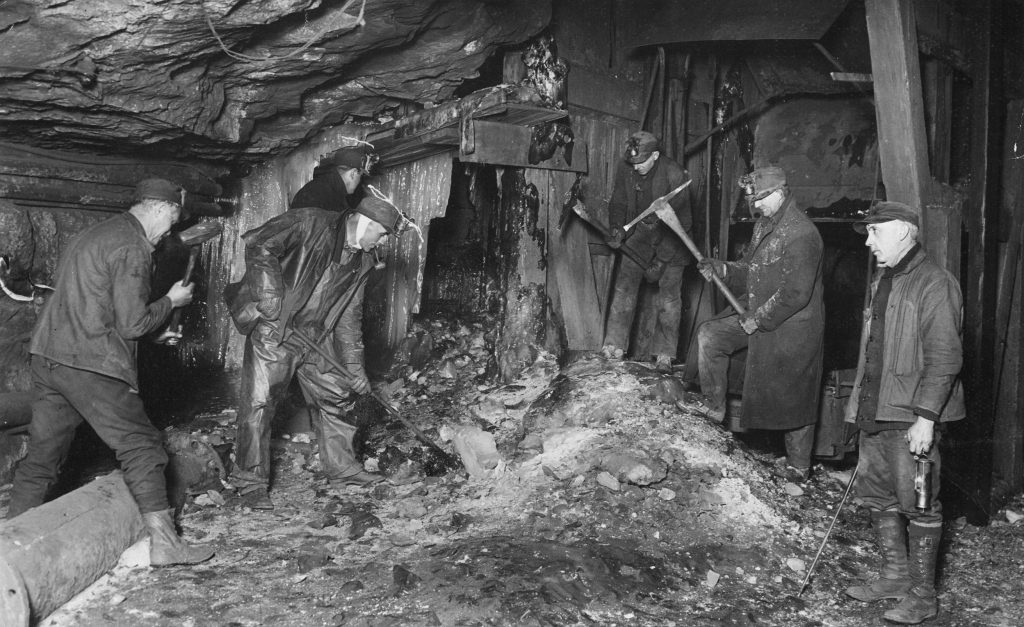What You Need to Know to Trade the Energy Rally
After many years stuck in a downward cycle, the price of coal has soared in 2021 on the heels of a strong rally in the broader energy sector.

In what’s quickly becoming the “year of the great commodities rally,” coal has moved into the spotlight, as a surge in prices has effectively resuscitated a previously beatdown corner of the energy sector.
And like most things these days, a good chunk of the narrative ties back to the pandemic.
Supply chain disruptions have been common since COVID-19 first started spreading around the globe, and those constraints have slowly begun to strangle the energy sector. That means as extra supplies have dwindled, increased competition for new production has catalyzed an environment of rising prices (aka inflation).
As has traditionally been the case, when supplies of one commodity are limited, the energy sector usually turns to the next one down the line. So as the availability of crude oil and natural gas has tightened, it’s no great surprise that utilities have pivoted toward coal.
The problem is supplies of coal aren’t that plentiful, either.
That’s in part due to the pandemic, as overall production took a hit when various economies around the world shut down. But that’s also due to the fact that coal has been stuck in a downward demand cycle for the last decade.
Coal has a long history and was one of the primary sources of energy during the 20th century. But its popularity faded in recent years, as climate research revealed that coal was one of the dirtiest fossil fuels—especially when it comes to the release of carbon dioxide, and other pollutants, into the atmosphere.
For this reason, many electricity providers were switching away from coal in recent years—a transition that’s only sped up as the relative prices of solar and other renewables have dropped toward the levels of traditional fossil fuels. Solar power actually made big news in 2020 when the International Energy Agency (IEA) reported that “the world’s best solar power schemes now offer the cheapest electricity in history.”
Even up against other traditional fossil fuels, such as natural gas, coal seemed to be fighting a losing battle. Pound for pound, natural gas emits roughly 50% less carbon dioxide than coal, so when the shale revolution in the U.S. increased available supply—and simultaneously pushed down prices—many energy producers switched from coal to natural gas.
So what’s changed the situation in 2021?
Primarily, it’s the fact that natural gas prices have more than doubled since June of 2020. Moreover, the availability of natural gas supplies has likewise tightened.
Taken together, that means that electricity providers have been forced to dip back into coal. As a result, the price of coal has jumped this year. The price for a short ton of Appalachian coal has risen roughly 35% so far in 2021, to $73.25.
Similarly, Australia’s Newcastle thermal coal, which is widely viewed as a reliable global benchmark, is trading three times higher this year than it was at the end of 2019 (more than $200 per metric ton).
Rising prices and dwindling supplies of natural gas and coal have already taken their toll in many areas of the globe. In China, energy providers have been forced to institute rolling blackouts, to ensure that the supply of electricity isn’t outstripped by demand.
Coal is still a big player in China, due to the country’s huge network of coal-powered power plants. Estimates suggest that nearly 57% of the electricity in China is still produced using coal.
As China’s economy has expanded in the 21st century, the country has turned to Australia, Africa and the Americas to satisfy its immense appetite for this commodity.
Europe had previously committed to decommissioning the bulk of its coal plants by 2030, and had reportedly achieved nearly half that goal heading into 2021. But leaders in the area have recently been forced to reconsider that timeline, amidst a growing energy crisis in the region.
Declining stocks of natural gas, combined with spiking prices, have proven to be a big problem for Europe this fall. And it’s expected the situation will worsen with the onset of winter when colder temperatures catalyze a fresh surge in demand.
All in all, that means coal’s value as a stop-gap solution is growing virtually everywhere, which of course is why prices are likewise spiking.
It should be noted that coal has two primary uses: thermal coal is used to generate electricity, while metallurgical coal (aka “met coal” or “coking coal”) is a key ingredient in the production of steel.
Much like the previously quoted price environments for thermal coal, metallurgical coal prices have also spiked in 2021, as highlighted in the chart below.
To track and trade the coal sector, readers can add the following names to their watchlists:
- Alliance Resource Partners (ARLP)
- Arch Resources (ARCH)
- BHP Group (BHP)
- Consol Energy (CEIX)
- Contura Energy (AMR)
- CNX Resources (CNX)
- Hallador Energy (HNRG)
- NACCO Industries (NC)
- Natural Resource Partners (NRP)
- Peabody Energy (BTU)
- Ramaco Resources (METC)
- SunCoke Energy (SXC)
- Teck Resources (TECK)
- Warrior Met Coal (HCC)
The primary coal ETF—The VanEck Vectors Coal ETF (KOL)—shut down at the end of 2020. But with lots of fresh trading interest in the space, it’s easy to envision another one opening in the near future.
For timely insights on everything moving the markets in Q4, readers are encouraged to into TASTYTRADE LIVE—weekdays from 7 a.m. to 4 p.m. CST—at their convenience.
Sage Anderson is a pseudonym. He’s an experienced trader of equity derivatives and has managed volatility-based portfolios as a former prop trading firm employee. He’s not an employee of Luckbox, tastytrade or any affiliated companies. Readers can direct questions about this blog or other trading-related subjects, to support@luckboxmagazine.com.



















